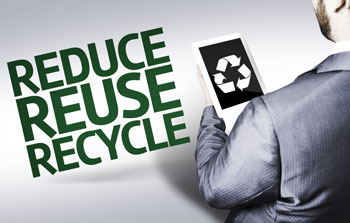Carbon Abatement and Green Chemistry
Carbon Abatement
 Global warming is now widely accepted to be linked to the carbon cycle; as more CO2 and CH4 and other greenhouse agents are released into the atmosphere, climate change ensues. Consequently, the world's governments are developing strategies aimed at reducing emissions and businesses and institutions are being "encouraged" to follow this route by the introduction of schemes such as the CRC Energy Efficiency Scheme. The introduction and development of energy efficiency buildings, equipment and processes can reduce a company's liability to pay taxes as well as have direct commercial benefits. Consequently, beneficial manipulation of novel and existing technologies to offset the economic and technical implications of carbon abatement are advantageous.
Global warming is now widely accepted to be linked to the carbon cycle; as more CO2 and CH4 and other greenhouse agents are released into the atmosphere, climate change ensues. Consequently, the world's governments are developing strategies aimed at reducing emissions and businesses and institutions are being "encouraged" to follow this route by the introduction of schemes such as the CRC Energy Efficiency Scheme. The introduction and development of energy efficiency buildings, equipment and processes can reduce a company's liability to pay taxes as well as have direct commercial benefits. Consequently, beneficial manipulation of novel and existing technologies to offset the economic and technical implications of carbon abatement are advantageous.
Rejuvetech offers a tailored approach to the evaluation and determination of commercial carbon abatement problems specific to that particular company or industry. It is highly likely that carbon emissions may be capable of being chemically or physically modified to lead to a commercial product, depending on the type of emission in question, e.g. manufacture of gypsum or other related minerals from fossil fuel combustion products.
Past project work includes:
- Impure industrial scale CO2 emission
- Biofuel production and manipulation of biofuel combustion products
- Anaerobic digestion chemistry
Green Chemistry
 The term "green chemistry" generally relates to any chemical process that:
The term "green chemistry" generally relates to any chemical process that:
- eliminates or reduces the use of harmful feedstocks
- eliminates or reduces the production of hazardous bi-products or waste
- reduces energy consumption and hence your carbon footprint
Sustainable chemistry is an area of expertise which is an integral part of Rejuvetech's skill set. Rejuvetech has considerable experience focused on the design of products and processes that minimise the use and generation of hazardous substances. Utilisation and improvement of existing processes, feedstocks and waste streams, followed by profiling of suggested process form the core of process improvement. In addition to reduced carbon emissions, this approach can also produce a direct income stream from waste and co-products and result in the double benefit of eliminating or reducing a known challenge and introducing a commercial benefit.
Examples of past project work:
- Mineral extraction from waste water effluent
- Transition metal extraction and recycling from solid and liquid effluent streams
![English language website []](cmsimages/uk.png)
![Chinese language website []](cmsimages/cn.png)



